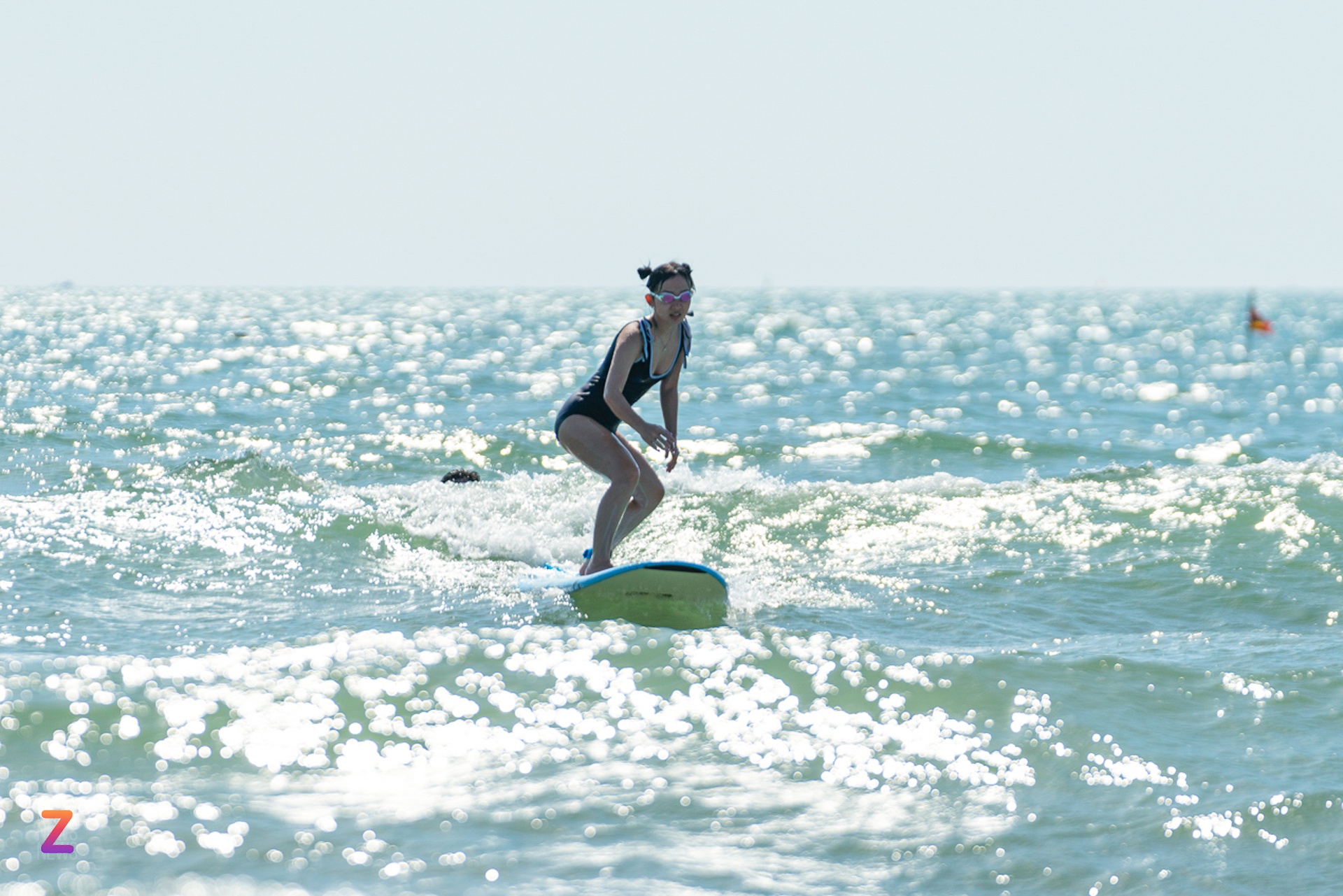
Tourists from Ho Chi Minh City are surfing in Mui Ne, March 2025. Photo: Linh Huynh . |
Under the shade of tents made from colorful tarpaulins, fishermen in Mui Ne ( Lam Dong ) are diligently repairing boats and untangling nets. In shallow waters, women wearing conical hats quickly clean the seafood they have just caught - sea snails, shrimp, blue crabs - and stir anchovies into large vats where they are fermenting to make fish sauce. The strong smell of fish sauce permeates the air, so thick it seems you can almost touch it.
On the water, round coracles and long wooden boats, painted in yellow, green, and red, were anchored and swaying. The sterns of each boat had sharp eyes painted on them, as if watching the stranger's every move.
Locals believe it is the “eye of the god” – a symbol of the whale, the sacred sea god, writes Daniel Stables of the National Geographic magazine (part of the US National Geographic Society). Locals believe the whale is the god of the South Sea, who once saved fishermen in distress during storms, and that belief still lives in the spiritual life of many generations of Mui Ne.

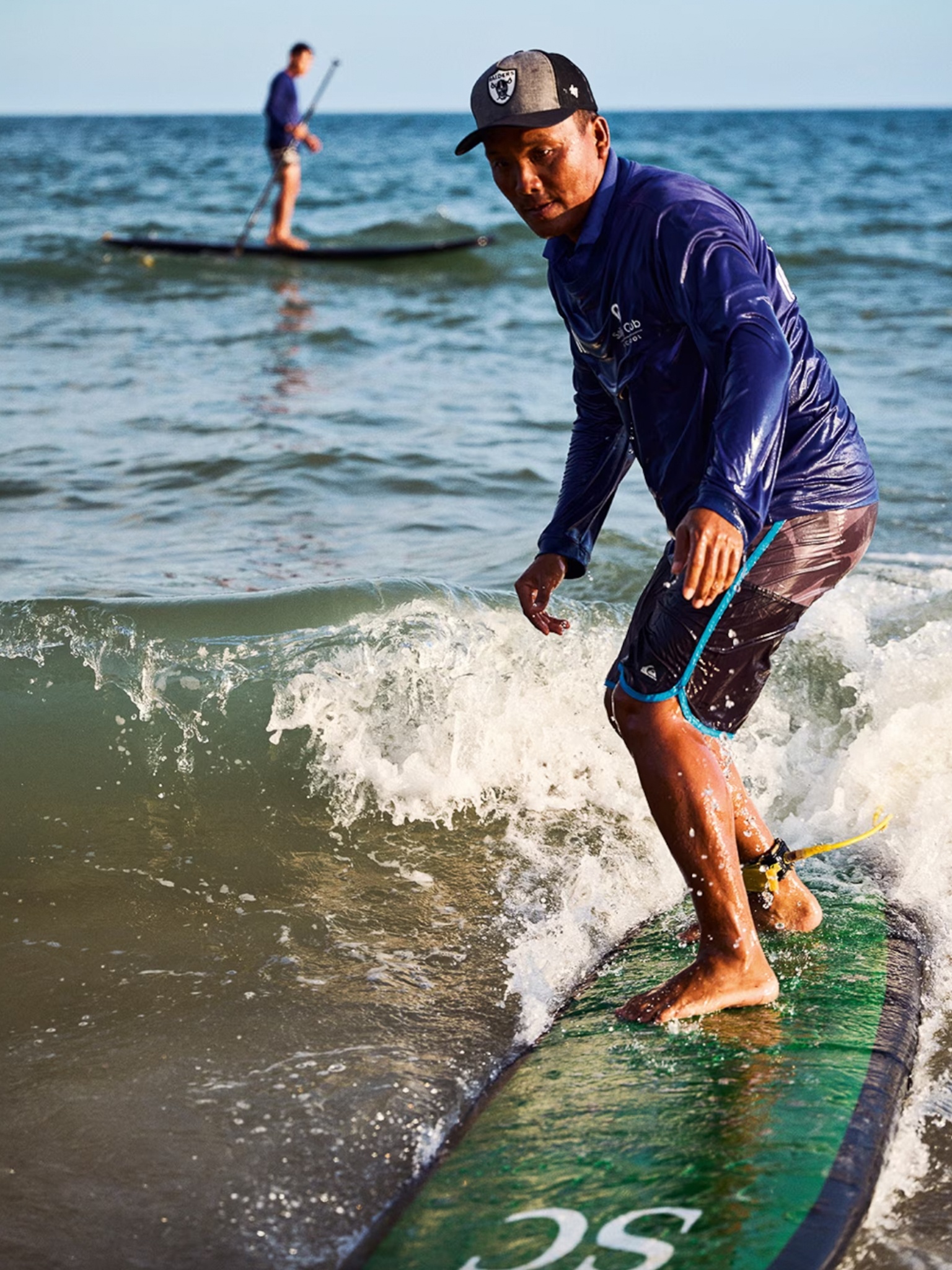
Peaceful Mui Ne scenery through the eyes of a National Geographic photographer . Photo: Ulf Svane. |
Ironically, the same winds that once brought people to pray for safety now attract tourists. Mui Ne has about 260 days of strong winds a year, with two distinct wind seasons – the southwest monsoon from June to September, and the northeast monsoon the remaining months – creating ideal conditions for water sports such as windsurfing, kite-surfing, sailing and surfing.
Nguyen Tan Hung, a kiteboarding instructor at Mui Ne Sailing Club, was one of the first to witness the transformation of his homeland. Born into a family of fishermen, he followed his father out to sea and grew up on boats with “sea god eyes”. Hung said he “has seawater in his blood”. He absolutely believes in whales, because his father himself witnessed the sea god saving people in the middle of a storm.
Hung clearly remembers the milestone that "changed Mui Ne's life" in 1995, when thousands of people flocked to Mui Ne to see the total solar eclipse.
"Before that, no one knew about Mui Ne. But after that day, everything changed," he said.
Visitors are captivated by the long stretches of red and white sand dunes, the cool casuarina trees and the calm sea. For those who enjoy water sports, what makes them passionate is the wind - steady, strong but predictable. Since then, Mui Ne has emerged as a more peaceful water sports destination compared to the water sports paradises in Thailand or the Philippines.
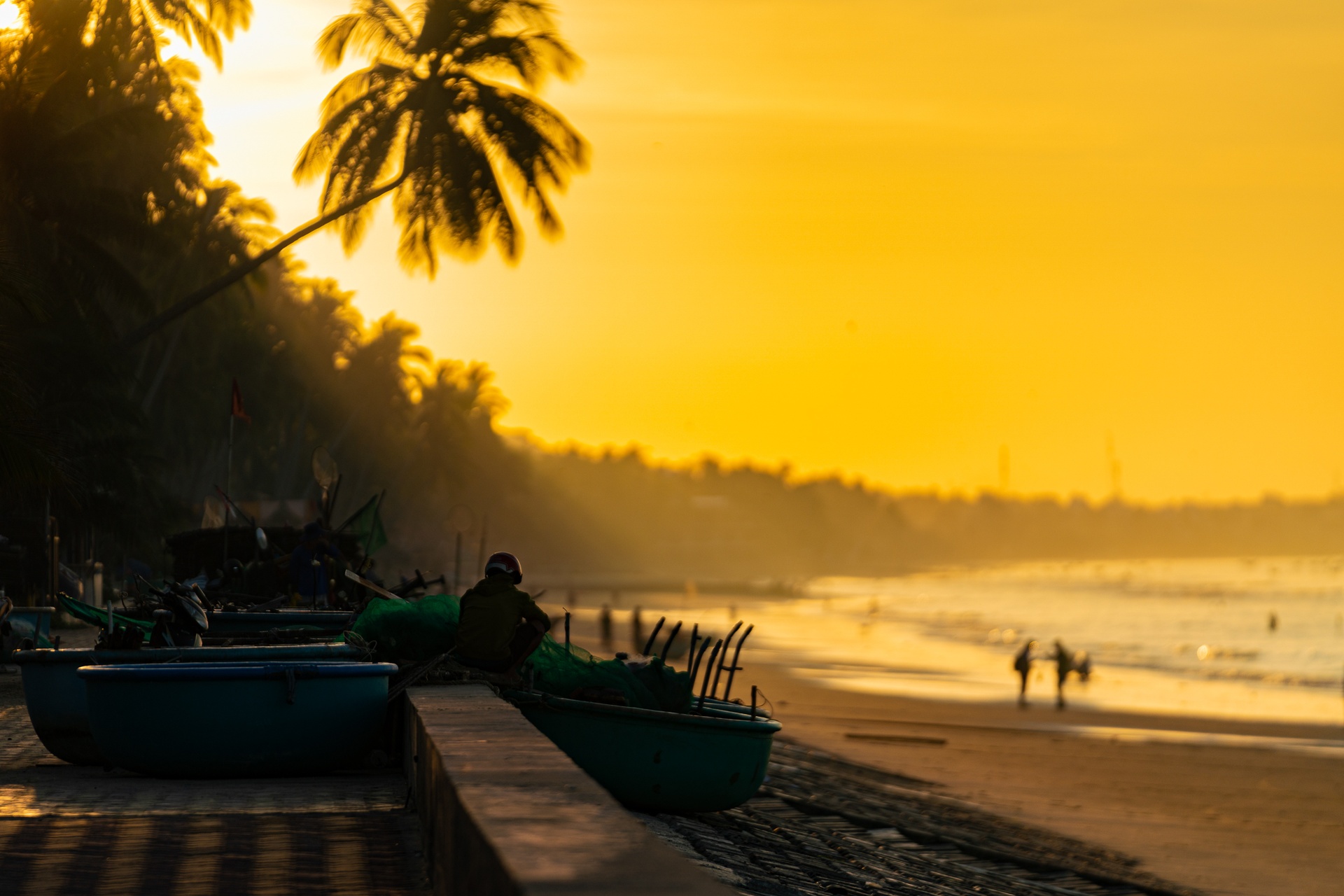

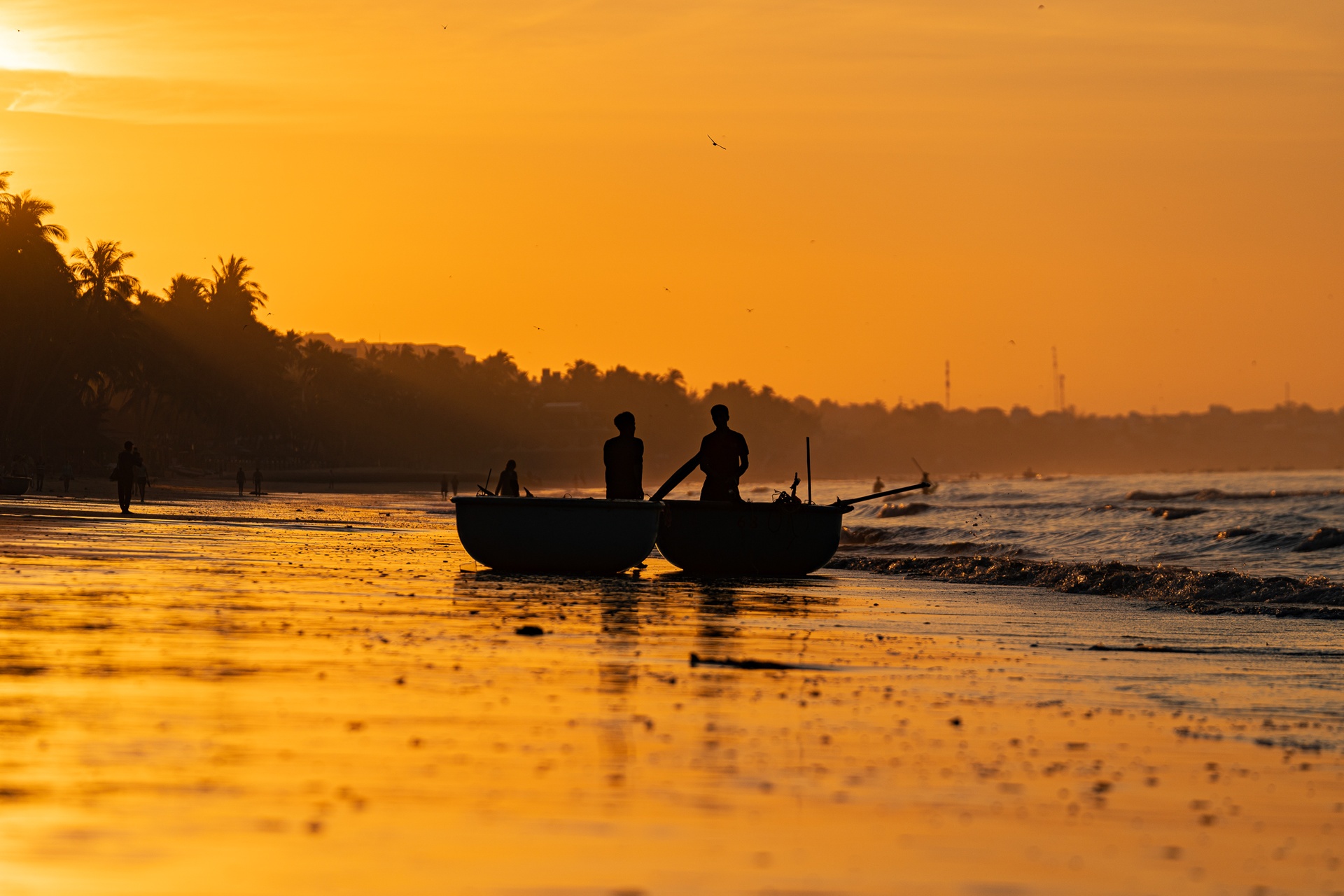
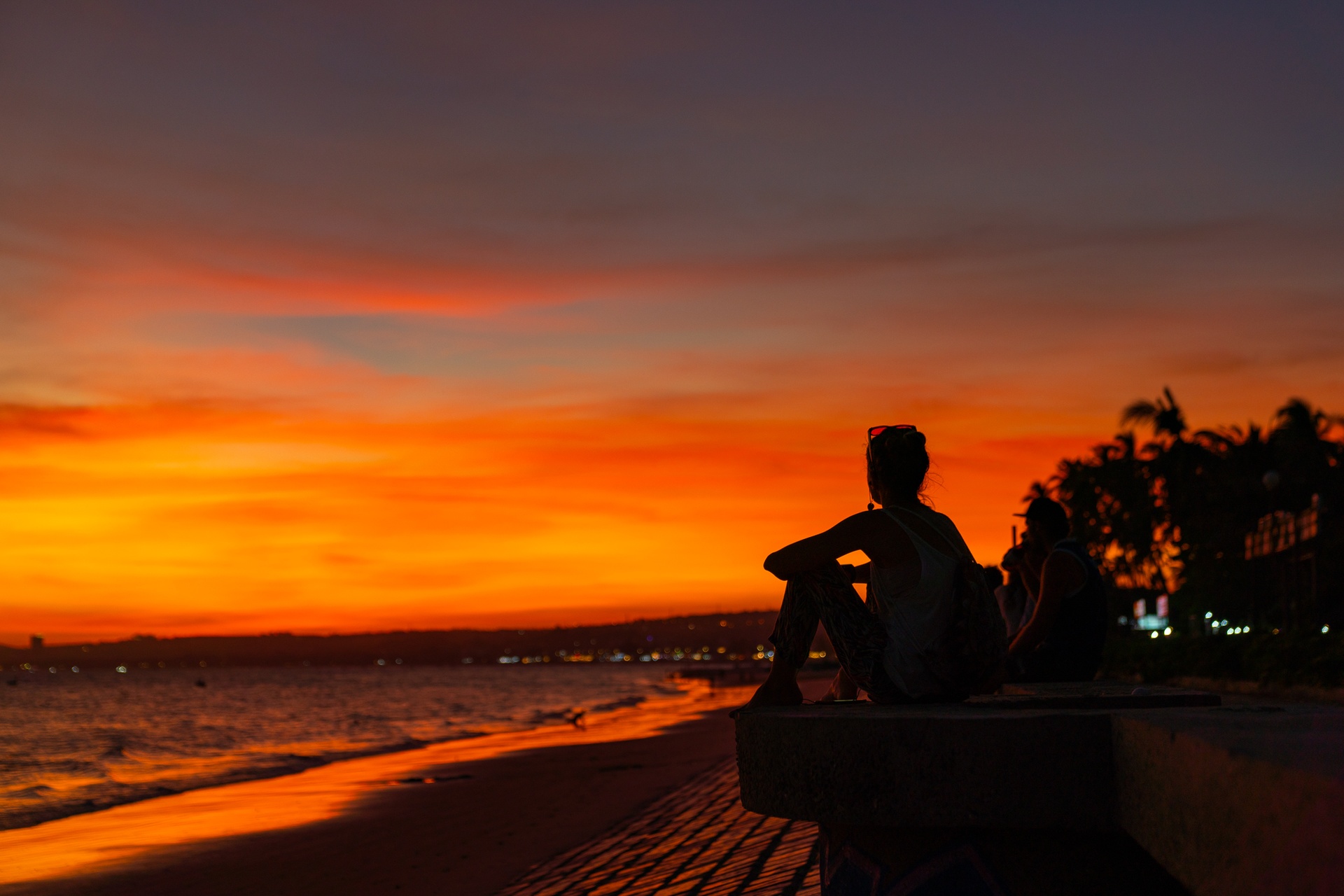
Mui Ne is as beautiful as a painting under the sunrise and sunset. Photo: Linh Huynh. |
Besides the sea and wind, Mui Ne also has Van Thuy Tu temple - a place to preserve thousands of whale skeletons that have been collected along the coast for centuries. According to Mr. Ly Nham, the temple caretaker, the temple was built in 1762. Behind the main altar is a large glass cabinet filled with whale jaw bones, some up to 4 meters long. In the next room is a whale skeleton more than 20 meters long - said to be the largest in Southeast Asia.
"This skeleton washed ashore in 1800, but the whale had saved fishermen long before that. To us, the whale is the guardian angel of the ocean," said Mr. Nham.
As the afternoon wore on, the sunlight dyed Suoi Tien - a small stream winding through the red earthen walls like a painting - golden. The waves were calm, the wind stopped - Mui Ne returned to its original, peaceful appearance. According to Mr. Hung, this week the whales were holding the wind for fishermen, not for surfers.
znews.vn
Source:https://lifestyle.znews.vn/national-geographic-praise-het-loi-mui-ne-ve-the-thao-bien-post1570162.html#zingweb_category_category479_featured_1





![[Photo] Bustling Mid-Autumn Festival at the Museum of Ethnology](https://vphoto.vietnam.vn/thumb/1200x675/vietnam/resource/IMAGE/2025/10/4/da8d5927734d4ca58e3eced14bc435a3)
![[Photo] Solemn opening of the 8th Congress of the Central Public Security Party Committee, term 2025-2030](https://vphoto.vietnam.vn/thumb/1200x675/vietnam/resource/IMAGE/2025/10/4/f3b00fb779f44979809441a4dac5c7df)
![[Photo] General Secretary To Lam attends the 8th Congress of the Central Public Security Party Committee](https://vphoto.vietnam.vn/thumb/1200x675/vietnam/resource/IMAGE/2025/10/4/79fadf490f674dc483794f2d955f6045)


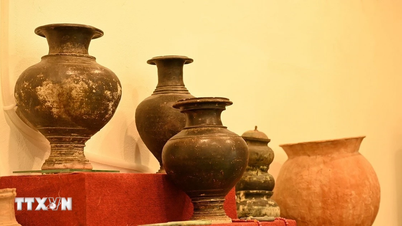









![[Photo] Bustling Mid-Autumn Festival at the Museum of Ethnology](https://vphoto.vietnam.vn/thumb/402x226/vietnam/resource/IMAGE/2025/10/4/da8d5927734d4ca58e3eced14bc435a3)

![[Photo] General Secretary To Lam attends the 8th Congress of the Central Public Security Party Committee](https://vphoto.vietnam.vn/thumb/402x226/vietnam/resource/IMAGE/2025/10/4/79fadf490f674dc483794f2d955f6045)
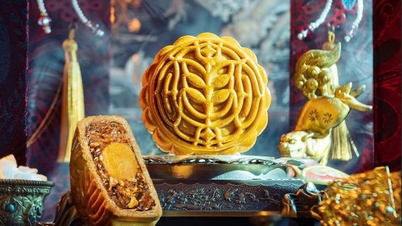



































![[VIDEO] Summary of Petrovietnam's 50th Anniversary Ceremony](https://vphoto.vietnam.vn/thumb/402x226/vietnam/resource/IMAGE/2025/10/4/abe133bdb8114793a16d4fe3e5bd0f12)

![[VIDEO] GENERAL SECRETARY TO LAM AWARDS PETROVIETNAM 8 GOLDEN WORDS: "PIONEER - EXCELLENT - SUSTAINABLE - GLOBAL"](https://vphoto.vietnam.vn/thumb/402x226/vietnam/resource/IMAGE/2025/7/23/c2fdb48863e846cfa9fb8e6ea9cf44e7)



















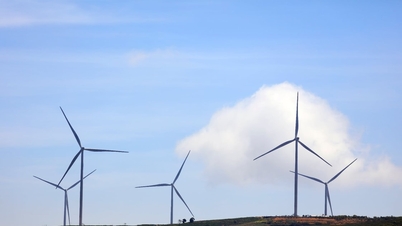
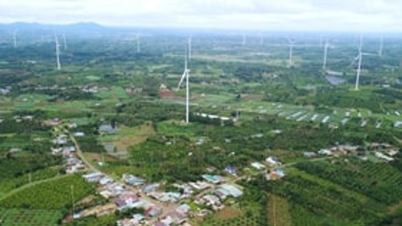








Comment (0)